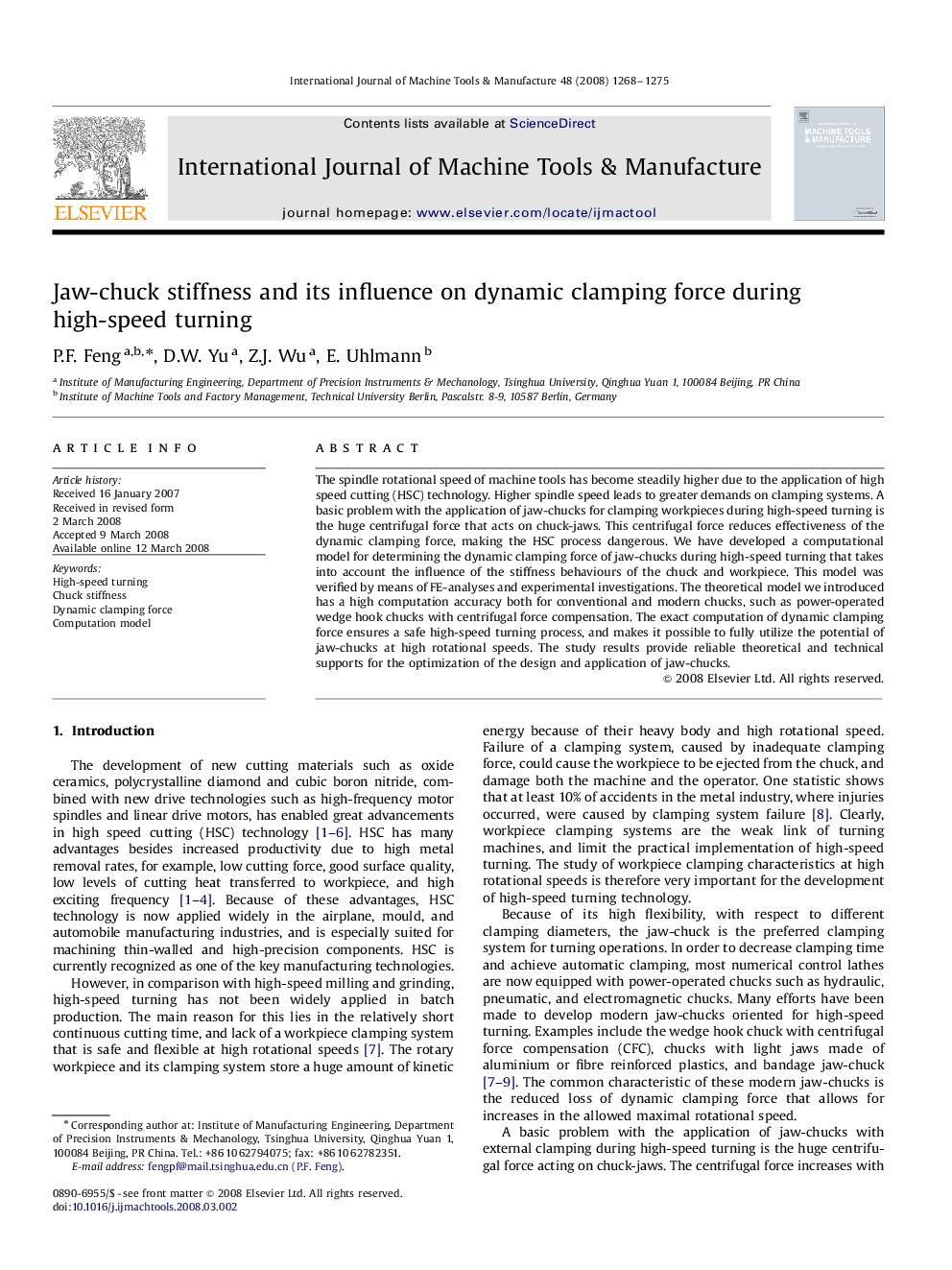| Article ID | Journal | Published Year | Pages | File Type |
|---|---|---|---|---|
| 779019 | International Journal of Machine Tools and Manufacture | 2008 | 8 Pages |
The spindle rotational speed of machine tools has become steadily higher due to the application of high speed cutting (HSC) technology. Higher spindle speed leads to greater demands on clamping systems. A basic problem with the application of jaw-chucks for clamping workpieces during high-speed turning is the huge centrifugal force that acts on chuck-jaws. This centrifugal force reduces effectiveness of the dynamic clamping force, making the HSC process dangerous. We have developed a computational model for determining the dynamic clamping force of jaw-chucks during high-speed turning that takes into account the influence of the stiffness behaviours of the chuck and workpiece. This model was verified by means of FE-analyses and experimental investigations. The theoretical model we introduced has a high computation accuracy both for conventional and modern chucks, such as power-operated wedge hook chucks with centrifugal force compensation. The exact computation of dynamic clamping force ensures a safe high-speed turning process, and makes it possible to fully utilize the potential of jaw-chucks at high rotational speeds. The study results provide reliable theoretical and technical supports for the optimization of the design and application of jaw-chucks.
